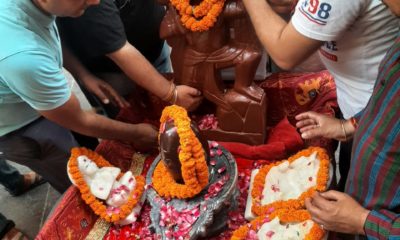News
NCR property buyers held to ransom by apathy from developers, authorities: JLL
The following is the report by Ashutosh Limaye, National Director – Research, JLL India
A National Green Tribunal (NGT) order in 2013 and yet another recent one have collectively had a greater negative impact on homebuyers in the National Capital Region (NCR) than on the developer community. While home buyers were caught unawares and continue to remain jittery with the resultant delay in possessing their dream homes, these two NGT orders reveal the apathy authorities and developers have towards buyers.
In one case, several builders having projects adjacent to the eco-sensitive zone (ESZ) around Okhla Bird Sanctuary have not been able to hand over possession of homes for the last year-and-a-half due to the October 2013 order of NGT, which stopped Noida Authority from giving completion certificates to projects within a 10 km radius of the sanctuary. By the latest estimates, more than 50,000 apartment buyers in Noida have been affected by this order.
In the second case – a recent NGT order – developers not adhering to the 2010 guidelines of the Ministry of Environment and Forests (MOEF) has been restricted from finishing their construction projects in Noida Extension. The guidelines outlined in the order are related to checking pollution during construction activities, and the precautions that need to be taken by the builders.
Many realtors in Noida and Greater Noida did not follow MOEF-2010 guidelines during construction because there was no way for the local pollution watchdog and other concerned authorities to monitor their activities. According to some media reports, construction work in 20 projects (80 towers) which were already delayed by 2-3 years will be further delayed, affecting the buyers in these projects.
Many buyers have paid close to the entire amount for their homes in these locations, but in the light of these NGT orders, they do not know when they will be able to move into their new homes or even sell off their apartments. A few years ago, Noida Extension had seen farmers protesting against land acquisition in the area, which had led to all construction activity coming to a halt in 2011. The final order on the land acquisition is pending with the Supreme Court.
All such cases have been affecting market sentiment negatively in the last few years. Buyers in NCR are unsure about getting early relief since developers halt work as soon as any new court ruling comes in and is fully understood by them. Court cases, on the other hand, tend to drag on for very long in the Indian judiciary system. End users not only have to shoulder the burden of paying EMIs but also their ongoing monthly rentals, while simultaneously remaining unsure of when they will start getting returns on their capital values.
Likewise, developers cannot be sure of court rulings halting their work even on land parcels they have purchased directly from the government. Such land is considered to be free of all issues and as having clear titles; however, as the Okhla case shows, they too can do face the brunt of uncertainty, and deserve to be heard.
Already, developers in India need countless approvals, and the several steps that must be taken to obtain construction permits can take as much as two years. The World Bank’s 2014 report on ‘Dealing with Construction Permits’ ranks India 184th out of 189 countries.
In the case of the Noida Extension, if the builders have not adhered to pollution control norms, they should be penalized for damaging the environment and causing pollution during construction. However, the administration has inarguably also been caught sleeping and evidently needs to do a much better job after this NGT order.
Having a centralized approval and monitoring system at the state level is of utmost importance in India. A nodal body – in this case, Noida Authority – that can also coordinate with central government agencies and the NGT as and when required, as also become the facilitation centre for both developers and buyers. Such an approach can centralize all land records and surveys, applicable rules and regulations, etc.
As for the Okhla case, aggrieved home buyers do have recourse even at this stage. They can refer to the January 2014 Supreme Court ruling in a Mumbai case where buildings had come upon plots labeled as private forest land. The court had heavily criticized the Maharashtra government for bad administration and noted that it is unfair for buyers or residents to bear the brunt when the state showed no intention of taking over the land in the past several years. In this case, the judiciary decided in favour of home buyers, and this paved the way for regularization of these projects.
Another case home buyers could look at is the Campa Cola compound – a housing society located at Worli in central Mumbai – that became a classic example of skewed development and a much-discussed builder-civic administration nexus as developers had constructed 35 illegal floors across seven buildings in the project when they were permitted to build only five. Homebuyers had paid all the legal dues to the government and yet got entangled in a long-drawn legal battle. The SC’s January 2015 ruling though, was a favourable solution for buyers as it directed the beleaguered residents to seek regularisation of their flats by filing a fresh application with the state government and the civic body.
Cases in which the government regularized illegal structures or buildings without all necessary approvals bowing to populist and political pressure are of Ulhasnagar and Kalyan-Dombivli, both part of suburban Mumbai. More than 1.13 lakh buildings were identified as illegal in Ulhasnagar before a special law regularized most of them in 2006.
In August 2006, the Bombay high court, acting on public interest litigation (PIL), had directed the demolition of all unauthorized structures under the jurisdiction of Kalyan-Dombivli’s civic body, following which the government regularized around 67,900 irregular constructions through an ordinance and incorporating some or the other penalty in the law.
-



 News3 weeks ago
News3 weeks agoKW Delhi 6 Mall Onboards New Brands
-



 News4 weeks ago
News4 weeks agoManasum Senior Living Launches IKIGAI GOA, A Senior Living Community in North Goa, in collaboration with Prescon Homes
-



 News2 weeks ago
News2 weeks agoGodrej Properties Sells Rs 3k cr+ Homes of Godrej Zenith, Gurugram, within 3 days
-



 News4 weeks ago
News4 weeks agoBridging India Divide: Top 5 Tier- 2 Cities to Focus On
-



 News3 weeks ago
News3 weeks agoCommercial Realty Gets Tech Savvy: Fast Construction, Enhanced Convenience
-



 News4 weeks ago
News4 weeks agoMultipoint Connection – A Definite Boon
-



 News3 weeks ago
News3 weeks agoRBI’s Status Quo on Key Policy Rates to Help Maintain the Real Estate Growth Momentum, Say Industry Stalwarts
-



 News1 week ago
News1 week agoOlive Announces Dhruv Kalro as Co-Founder




























